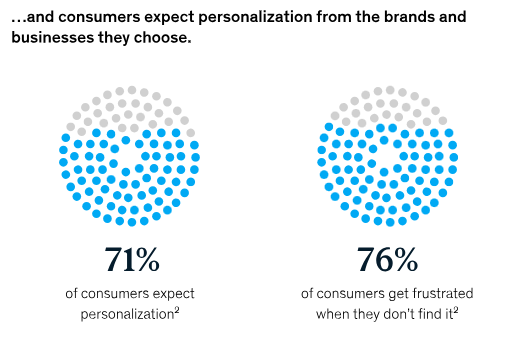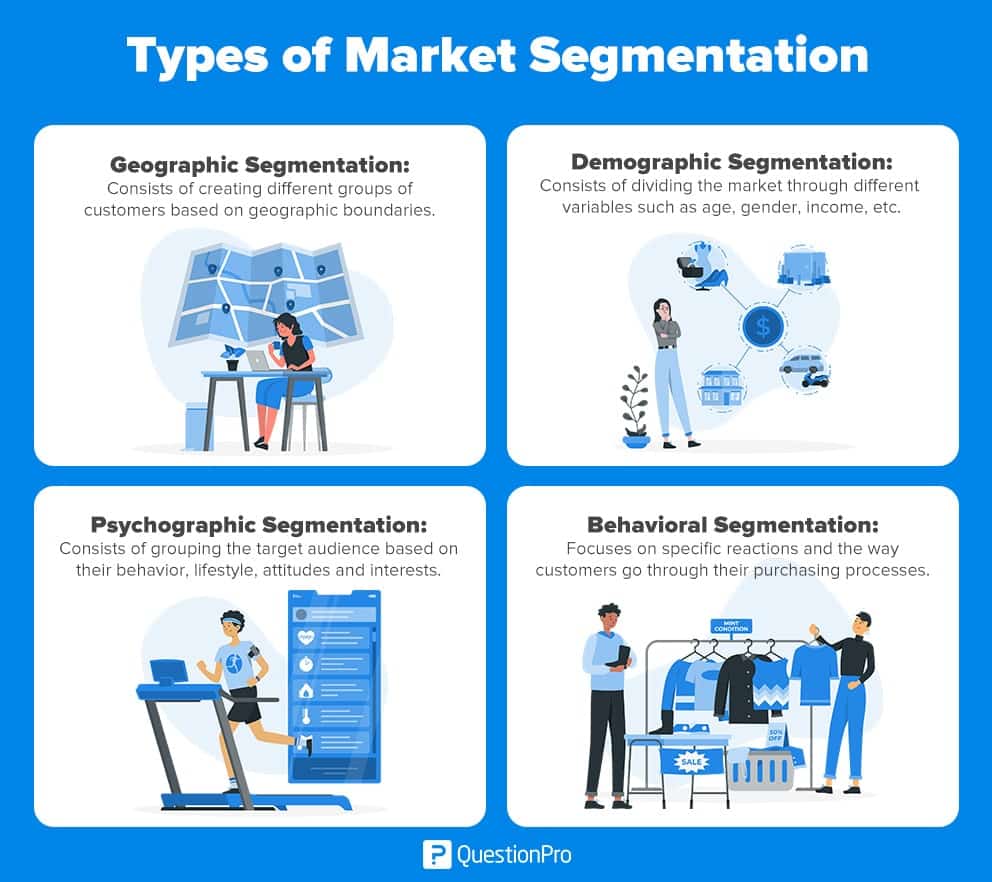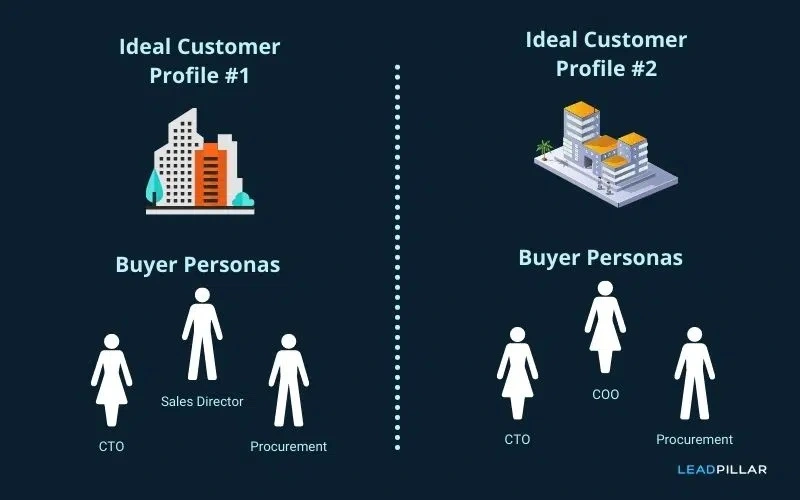The Ultimate Segmentation Strategy for More Sales
Today’s B2B sales landscape demands more than one-size-fits-all outreach with the hope that you’ll reach the right customers. Instead, you need a smart segmentation strategy that ensures your marketing and sales messaging resonates with potential buyers, and that it always reaches the right audiences.
Creating a segmentation strategy also enables your sales team to deliver on the every-increasing and evolving customer expectations around personalized brand interactions.
In this guide, we’ll define customer segmentation and its benefits, cover the types of segmentation strategies you can use, and walk through the essential steps for building a strategy that works.
Quick Takeaways
- Three-quarters of consumers today expect personalized experiences from brands and become frustrated when they don’t receive them.
- Segmentation makes sales strategies more efficient, engaging, and adaptive.
- The four primary types of customer segmentation are: geographic, demographic, psychographic, and behavioral.
- Having a segmentation strategy means you can prioritize and target your highest-ROI prospects.
- Your segmentation strategy should be continually refined and improved using data insights.
What is Customer Segmentation for Sales?
Customer segmentation for sales means categorizing your prospect base into distinct groups based on shared characteristics, behaviors, and preferences. The goal of segmentation is to tailor your marketing and sales strategies to meet the unique needs of each segment.
When you do, you’re able to create more personalized buyer experiences—something today’s customers expect at every stage of the journey with the brands and businesses they choose. According to McKinsey, 71% of customers expect personalization, and 76% become frustrated when they don’t receive them.

Here are some of the reasons why having a segmentation strategy is so important:
- Targeted Outreach: Customer segmentation enables you to target your outreach to align with customer needs and preferences. You can create messages and content that resonate specifically with each segment, increasing the likelihood of engagement and conversion.
- Improved Customer Relationships: When you understand your customers on a granular level, you can provide more relevant solutions and better customer experiences. This fosters stronger relationships and enhances customer loyalty.
- Sales Efficiency: Rather than applying a one-size-fits-all approach, segmentation allows you to allocate your resources more efficiently. You can prioritize high-value segments, optimizing your sales efforts for maximum return on investment.
- Adaptability: In a constantly evolving market, customer segmentation helps you adapt quickly to changing customer preferences. You can fine-tune your strategies based on the unique needs and behaviors of each segment.
In short: Customer segmentation for sales is about working smarter, not harder. It empowers you to connect with your audience on a deeper level, ultimately driving more sales and long-term success for your business.
Types of Segmentation
Before we jump into the ultimate segmentation strategy, it’s crucial to understand the different types of segmentation strategies you can implement. By categorizing your audience based on various criteria, you can tailor your sales approach for maximum impact.

Geographic Segmentation
Geographic segmentation divides your market based on geographical regions, such as countries, states, cities, or neighborhoods. It’s particularly useful for businesses with location-specific offerings or those looking to adapt marketing campaigns to regional preferences and behaviors.
For instance, if you’re a global e-commerce platform, you might need to adjust your product offerings, pricing, and shipping options for customers in different countries to cater to their specific needs.
Demographic Segmentation
Demographic segmentation takes into account demographic factors like age, gender, income, education level, and occupation. This type of segmentation helps in crafting targeted marketing messages that resonate with specific individuals on a human level.
For example: Consider a fashion retailer that targets a diverse customer base. They may use demographic segmentation to create marketing campaigns that appeal to different age groups, offering trendy or edgy styles for younger customers, and classic options for older ones.
Psychographic Segmentation
Psychographic segmentation focuses on the psychological aspects of consumer behavior. It considers factors like lifestyle, values, interests, and personality traits. Understanding customer psychographics allows you to create content and offers that align with their beliefs and preferences.
For example, a fitness company may use psychographic segmentation to target health-conscious customers who value an active lifestyle and environmentally friendly products. Their messaging and product recommendations would reflect these values.
Behavioral Segmentation
Behavioral segmentation analyzes customers based on their behaviors and actions. It includes factors such as purchase history, brand loyalty, usage patterns, and response to marketing stimuli. This type of segmentation helps in tailoring your sales approach to match the customer buying behavior.
Suppose you run a subscription-based streaming service. In that case, behavioral segmentation can help you identify customers who frequently cancel their subscriptions and those who consistently engage with your content. This information can guide your retention strategies and efforts to upsell or cross-sell relevant content.
5 Steps to Building a Successful Segmentation Strategy
Now that we’ve explored the various segmentation methods, let’s dive into the steps for creating a segmentation strategy that can significantly boost your sales results.
Collect and Analyze Customer Data
Begin by collecting comprehensive customer data. This includes demographic information, purchase history, online behavior, and any other relevant data points. Use analytical tools and customer relationship management (CRM) systems to organize and analyze this data thoroughly. By understanding your customers’ attributes and behaviors, you’ll lay a strong foundation for segmentation.
Segment Identification
Once you’ve gathered and analyzed the data, identify distinct customer segments. Look for patterns and commonalities among your customers, such as shared demographics, purchase preferences, or levels of engagement. These shared characteristics will serve as the basis for your segmentation.
You can also use segmentation data to develop ideal customer profiles (ICPs), which describe target B2B customers at an organizational level, and buyer personas, which describe the decision makers within those companies. ICPs and personas can help you refine your sales messaging even further so it reaches and resonates with the right audiences.

Prioritize Your Customer Segments
Not all segments are equally valuable to your business. Assess the potential of each segment by considering factors like size, growth potential, and profitability. Prioritize segments that align with your business goals and have the most significant impact on your bottom line.
Customize Messaging and Content
Tailor your sales and marketing messaging for each segment. Craft messages that resonate with the unique needs and preferences of each group. Whether it’s through email marketing, social media, or content creation, ensure that your communication speaks directly to the concerns and interests of each segment.
Test and Optimize
A successful segmentation strategy is not static; it evolves over time. Implement a system for monitoring and evaluating the effectiveness of your strategy. Track key performance indicators (KPIs) such as conversion rates, customer retention, and revenue generated from each segment. Use these insights to make necessary adjustments and refine your segmentation strategy for ongoing success.
Segmentation as a Differentiator
In a competitive sales landscape, a smart segmentation strategy can be your secret weapon for driving more sales and cultivating strong customer relationships. By understanding your customer base through effective segmentation, customized messages, and tailored sales approaches, you can unlock the full potential of your sales efforts.
Further, you can demonstrate to your customers how your company can deliver better, more customized solutions than your competitors.
Implementing the ultimate segmentation strategy is not a one-time task but an ongoing commitment to better serve your customers. As you fine-tune your segmentation approach over time and measure your success, you’ll see the results in pipeline and revenue growth.
Televerde offers industry-leading demand generation, sales, and customer experience services that can help your company maximize ROI on segmentation and other key strategies. Contact our team to learn more.



